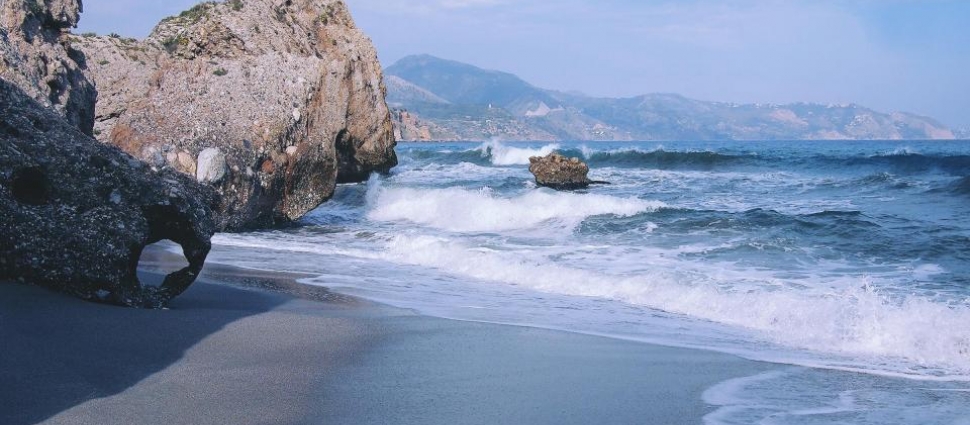Egeria’s Travels

Egeria’s Travels
One day in the fourth century, a woman with time and means left for a three-year tour of Biblical places. In her accurately detailed account, she says nothing about herself.
We only know that her name was Egeria and that she was writing for her “revered sisters” at home. This address has led some to believe that she was part of a religious community. But she might have simply been part of a group of interested women, like the group Jerome’s friend Marcella led in Rome around the same time. Or might have simply been writing to relatives. Whoever these “ladies” were, she loved them, calling them “light of my eyes.”
Most scholars believe she was a native of Galicia, in the top western corner of Spain. Her Latin was unrefined and even strange at times, but expressive, clear, and lively. She spent time in each place, asking questions and reporting her findings. Everywhere she went, she thanked God for allowing her to take this trip.
This report, the oldest text of this kind written by a woman, was written sometimes between 381 and 384. Almost unknown for centuries, it has recently attracted the attention of scholars for the information it contains, even though only the middle portion of the original text survives (no one knows how much is missing). It is normally considered a sample of the religious tourism that had become increasingly popular.
But Egeria’s serious study of the Scriptures, connected with the different locations and her diligent investigations, show that she was on a quest for answers that she – and possibly her friends at home – had raised. In this respect, she was like many other Christian women of her day who wrote long lists of questions to bishops and theologians.
Besides, in an age when photos and videos were not available, seeing the places where the biblical events took place must have confirmed Egeria’s faith, since Christianity is based on historical facts.
Her peregrinations took her to Constantinople, Israel, Egypt, and Mesopotamia. She traveled by mule or donkey and on foot. At least once, she obtained military escort for a dangerous portion of her journey. Along the way, she met Roman soldiers and travelers on camels, she talked to bishops and monks, and the deaconess Marthana (the only person mentioned by name in this account), who supervised a convent of nuns at the shrine of St. Thecla. The two women became close friends.
Everywhere she went, she followed a set ritual. “For it was always our custom that whenever we were about to visit places we desired, first prayer was made there, then the reading was read from the codex, also one psalm relevant to the matter was recited and prayer was made there.”[1]
The bishops and monks pointed Egeria to biblical events or to later legends. In the first twelve chapters, she described her discoveries along the journey taken by Moses and the ancient Israelites. Some of the places are of course unverifiable, such as the exact rock on which Moses broke the tablets or the place where Melchizedek offered bread and wine, but there are plenty of confirmed locations.
The climb up and down Sinai was hard for Egeria, but she persisted, moved by her desire to experience what Moses might have had to endure. When she reached the summit, she was surprised to find a group of priests or monks celebrating the Eucharist.
The second part of her account has to do with the locations connected with the life of Jesus. This part is particularly helpful to ecclesiologists, as it opens a window on some of the liturgies of the fourth-century church.
She stayed in Jerusalem long enough to participate both in the ordinary schedule of worship and in the main celebrations, such as the Epiphany (which, in those days, included Christ’s birth and baptism) on January 6, and Easter. On those occasion, many people arrived from different places to worship together. Both time, believers spent several days in prayer, singing, reading the Scriptures, and preaching. On some nights, the monks kept vigil, singing hymns.
Egeria was particularly surprised by the number of decorations in the churches, so many that everything seemed to be made of gold. This was a few decades after Constantine made Christianity legal, and he and his mother had been busy building and beautifying churches throughout the empire.
Most likely, the customs she encountered were different from those she was used to observe in her country. That’s probably why she accurately describes each detail for her sisters at home. As a faithful reporter, she doesn’t mention her opinions or preferences, which might be an indication of humility and respect for other traditions.
Modern readers typically approach Egeria’s writings out of curiosity, to learn how fourth-century Christians worshiped in the historical biblical places. But Egeria’s enthusiasm and eagerness to learn and her diligence in praising God every step of the way are refreshing.
[1] Anne McGowan, Paul F. Bradshaw, The Pilgrimage of Egeria: A New Translation of the Itinerarium Egeriae with Introduction and Commentary, Liturgical Press, 2018, 20





